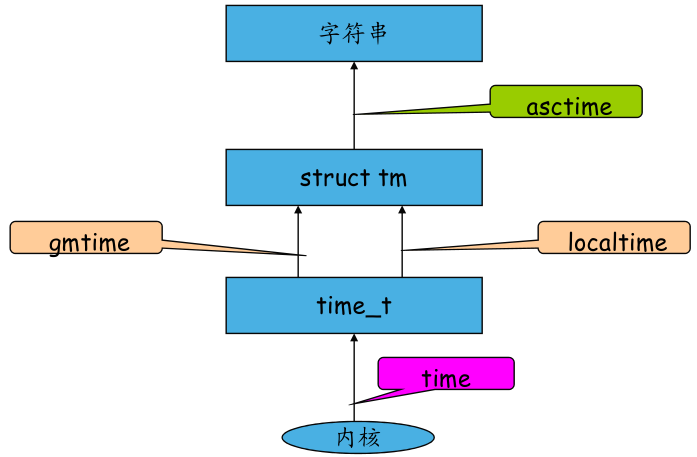文件编程
文件描述符 fd --->>>数字(文件的身份证,代表文件身份),通过 fd 可找到正在操作或需要打开的文件。
基本函数操作:
1)打开/创建文件
int open (const char* pathname, int flag, mode_t mode)
成功:返回文件的fd 失败:返回-1
文件路径 打开标志 文件权限
eg: fd = open("/home/S3-app/test.c", O_RDWR|O_CREAT, 0777);
2)读文件
ssize_t read(int fd, void *buf, ssize_t count)
成功:返回读取字节数 失败:-1
要读取的文件fd 读取的数据存到buf指向的空间 希望读取的字节数
int fd; char buf[1024];
eg: read(fd, buf, 1024);
3)写文件
ssize_t write(int fd,const void *buf, ssize_t count)
成功:返回写入字节数 失败:-1
要写入的文件fd 指向要写入的数据的位置地址 希望写入的字节数
int fd; char buf[1024];
eg: write(fd, "hello", 6);
发送、接收文件
//发送文件内容 先把要发送d 文件数据读到buf中->再通过buf写入发送的目标文件中
while((count=read(fd,(void *)buf,1024))>0) //buf:读取来的数据存到buf指向的空间 希望读取的字节数 返回读取的字节数
{
write(new_fd, &buf,count); //&buf->整个数据数组
}
close(fd);
//接收文件内容 先把要接收的数据读到buf中->再通过buf写入接收文件中
while((count=read(new_fd,(void *)buf,1024))>0)//buf:读取来的数据存到buf指向的空间 希望读取的字节数 返回读取的字节数
{
write(fd, &buf,count); //&buf->整个数据数组 tmpsize += count; if(tmpsize == filesize) break; } clode(fd);
Linux时间编程

/* time_t time(NULL) 日历时间--从标准时间到现在的秒数*/
time_t ctime = time(NULL); //不保存数值地址
printf("%d",ctime); int型
/* struct tm *gmtime(time_t *ct) 格林威治时间--世界标准时间*/
/* struct tm *localtime(time_t *ct) 本地时间 (同上)*/
struct tm *tm; //结构体
tm = gmtime(&ctime);
printf("%d:%d",tm->tm_hour,tm->tm_min); struct tm*结构体
/* char* asctime(const struct tm *tm) 以字符串方式显示 */
char* asc;
asc = asctime(tm);
printf("%s", asc); 指针字符串












